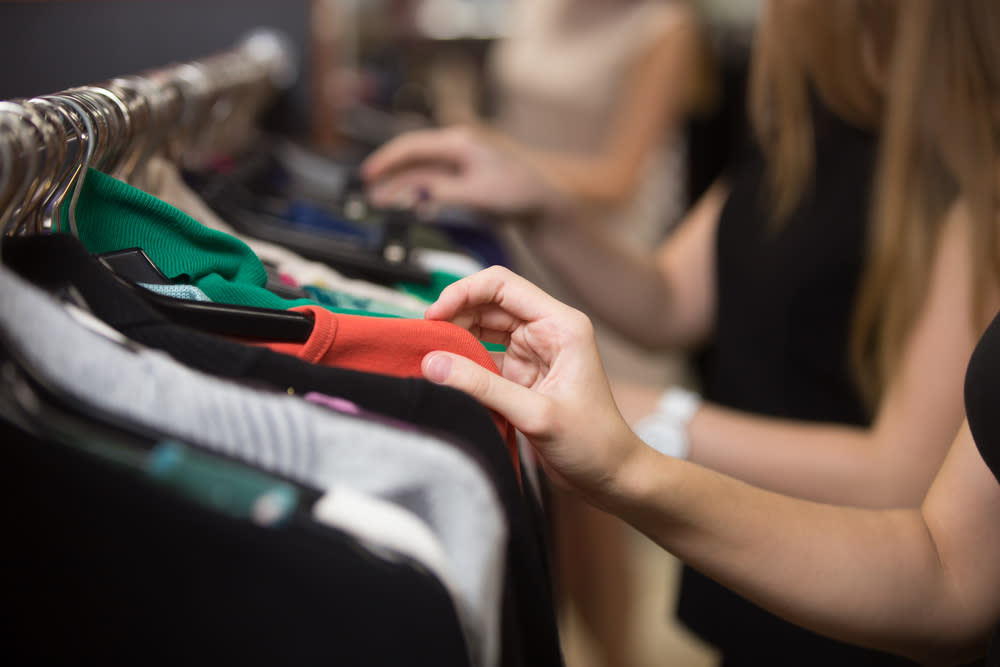Survey Reveals Consumer Preferences for Physical Stores

Trendy shopping platforms hold little staying power, according to a recent survey commissioned by GPShopper. The report revealed trends amid consumer behavior intention and preferences.
For example, while it’s no secret that many consumers relish shopping as a multisensory experience, others view it as a chore and will use any shortcut possible. A third group of pioneering buyers capitalizes not only on what but how they shop to signal their trend savvy. “I bought it off Instagram,” or “it came in my subscription box” can earn an eyebrow-raised nod of approval in certain circles.
While no one can predict what new buying platforms may emerge in the next decade, data suggests that “OG” shopping in stores, at least in certain sectors, is still safe for now.
Maya Mikhailov, chief marketing officer and cofounder of GPShopper, said the past 20 years “have been a time of serious transformation for retail, but that doesn’t mean it’s also been a time of abandonment. Today, retailers are constantly experimenting with technology in an attempt to master the trend of the moment, but, contrary to popular belief, traditional shopping practices aren’t dead. People may assume methods like in-store shopping, for example, would pale in comparison to newer e-commerce offerings — but our research shows that’s not the case.”
The report, titled “Reality of Shopper Motivation,” distills survey results from more than 1,000 adult U.S. shoppers asking them about their current purchasing habits and how they see themselves spending in 10 years. While the report highlights the 31 percent who say they will not shop from social media in the future decade, that leaves 69 percent who might.
Emulating the kind of “care package” previously only blessed onto lucky college girls with a cool aunt, subscription boxes have taken niche retail to a whole new level. While the survey reports they do not replace traditional spending, suggesting that box subscriptions are seen as a bonus purchase, they are unlikely to produce repeat customers for box products. Subscribers like being able to sample products without buying them individually, but only 7 percent say they have become a repeat customer of a product after discovering it in a box.
Unsurprisingly, the monolith of longevity for physical stores is those selling “Big Life Items” like cars, engagement rings or home furniture. Sixty-eight percent of shoppers today want to make those major life purchases in physical stores, and 57 percent say they will still want to do it in person 10 years from now. (There are, as yet, no subscription boxes for diamonds or sofas.)
Legacy retailers balance trendy shopping modes when it comes to clothing, beauty and accessories. Fifty-eight percent of shoppers prefer to shop long-standing stores for clothing, while they are willing to be slightly more experimental with shoe sourcing. Even when shopping online, 40 percent of online shoppers choose specific retailer web sites over multiseller platforms like Amazon and Google Shopping. GPShopper predicts 29 percent brick-and-mortar purchases for the fashion and beauty sectors in the future. As Mikhailov explained, “The retailer who remembers where they’ve come from will be the one who has the clearest picture of where they’re going.”
Meanwhile, American retail giant Sears filed for bankruptcy last week. The 132-year-old department store pioneered the concept of mail-order shopping, offering at times everything from earrings to houses. While economists agree that one fatal flaw of the dinosaur was not keeping up with the times, the argument could be made that it failed to embrace and fully capitalize on its roots, instead resting on its laurels and donning blinkers to emerging competition.
What about “techifying” the in-store experience? It depends. Only 7 percent of shoppers envision themselves using phone-based “scan-n-go” style check-out in the future. That reluctance may be what caused Walmart to end its experiment with the technology in May of this year. When it comes to “experiential stores,” GPShopper reports 24 percent say they will not want to shop that way in the future, leaving a hefty majority who are potentially into it.
Lastly, for the retailer trying to convince consumers to treat themselves, 60 percent of shoppers will buy themselves presents on their birthdays, almost double those who will splurge after getting a raise at work. Half of Americans are spurred to open their wallets when they have a coupon inside. It sounds like a birthday coupon is a winning combination.
Related stories
Think Tank: Bringing Metallics to the Finish Line
Sea Bags and Sword & Plough Team Up on Charitable Collection
As Tulip Grows, Platform Provider Adds Two Women Executives
Get more from WWD: Follow us on Twitter, Facebook, Newsletter

